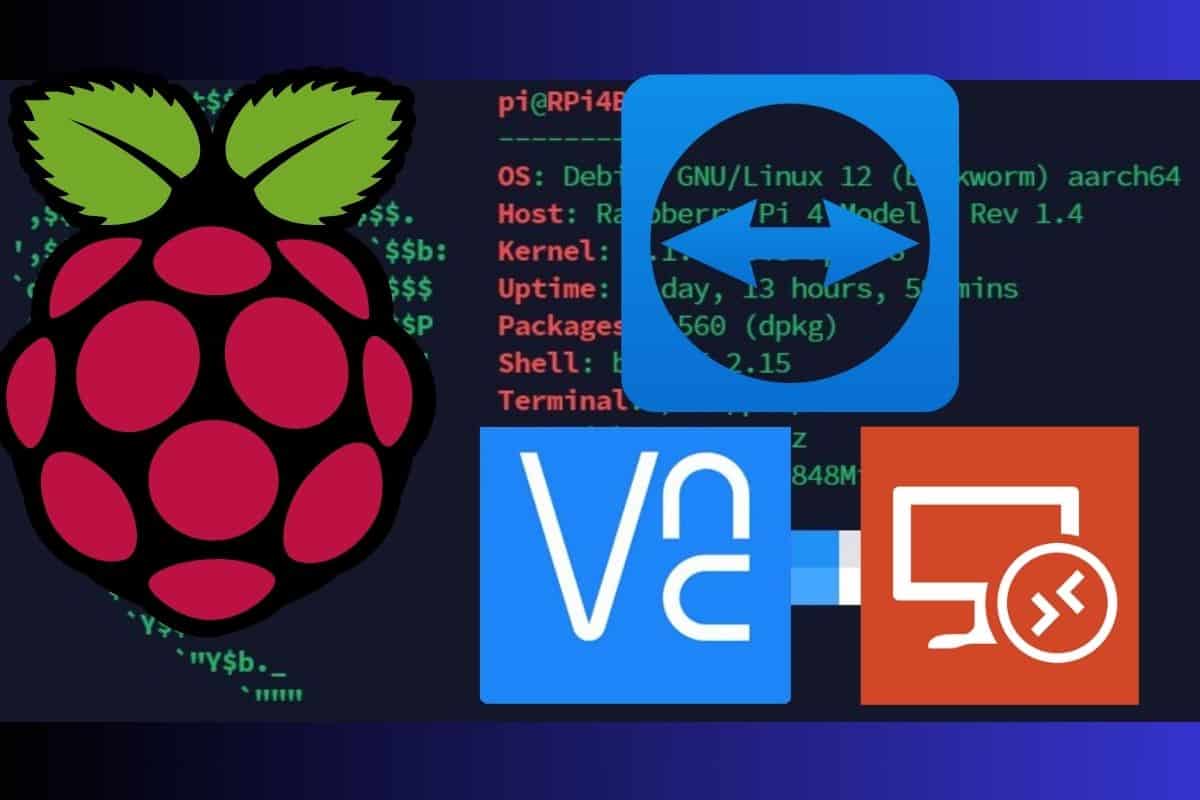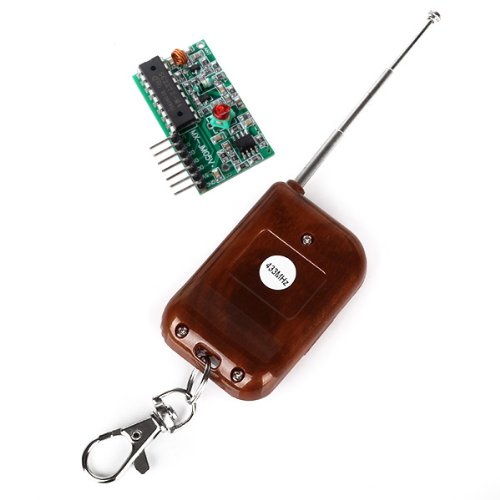Remote Control Raspberry Pi: Your Ultimate Guide
Can you truly harness the power of your Raspberry Pi, regardless of your physical location? The answer, emphatically, is yes. The ability to remotely control your Raspberry Pi over the internet is no longer a luxury but a fundamental requirement for anyone venturing into the world of IoT, home automation, or even simple server management.
Imagine the convenience of effortlessly monitoring your home security system, adjusting smart devices, or accessing critical files stored on your Raspberry Pi, all from the comfort of your office or even while you are on vacation. Remote access isn't just about convenience; it's about unlocking unprecedented levels of productivity and control. Yet, with such power comes a serious responsibility: the imperative to fortify your Raspberry Pi against unauthorized access. We will explore the essential strategies to guarantee that your setup is both functional and secure.
This comprehensive guide is designed to walk you through the process of establishing remote access for your Raspberry Pi, offering clear, step-by-step instructions, invaluable troubleshooting tips, and insights into advanced configurations. By the conclusion of this article, you will possess the knowledge and the tools to confidently manage your Raspberry Pi over the vast expanse of the internet.
- Remote Iot Access A Secure Amp Efficient Guide
- Wasmo Telegram A Comprehensive Guide To This Buzzword Its Uses
Table of Contents
- Introduction to Remote Control Raspberry Pi Over Internet
- Why Remote Control Raspberry Pi Over Internet?
- Basic Setup for Remote Control Raspberry Pi
- SSH Access for Raspberry Pi
- VNC Access for Raspberry Pi
- Security Measures for Remote Control
- Dynamic DNS for Raspberry Pi
- Port Forwarding for Raspberry Pi
- Troubleshooting Common Issues
- Advanced Configurations for Remote Access
- Conclusion
Introduction to Remote Control Raspberry Pi Over Internet
The Raspberry Pi, a testament to ingenuity and affordability, is a single-board computer that has redefined our approach to technology. Its inherent versatility renders it ideal for an astonishing spectrum of applications, ranging from sophisticated home automation systems to complex data centers. However, one of the most compelling capabilities of the Raspberry Pi lies in its capacity to be controlled remotely via the internet.
Remote control over the internet empowers you to interact with your device, irrespective of your physical location. This feature proves to be exceptionally useful for managing the myriad of devices that comprise the Internet of Things (IoT), hosting essential servers, or accessing vital files from virtually any corner of the globe. By leveraging secure communication protocols and cloud services, you can confidently ensure that your Raspberry Pi remains both accessible and shielded from potential threats.
In this comprehensive section, we will delve into the core principles of remote control and illuminate the plethora of benefits it offers to its users. Whether you are embarking on a personal project or tasked with managing a professional-grade server, a firm grasp of the fundamentals of remote access is paramount.
- Hdhub4u Your Guide To Downloading Movies Tv Shows In Hd
- Whats A Young Female Horse The Filly Explained More
Why Remote Control Raspberry Pi Over Internet?
The advantages of controlling your Raspberry Pi via the internet are numerous and compelling. Let's examine some of the most significant:
- Convenience: Access your Raspberry Pi from any location on Earth, provided you have a device with an internet connection.
- Flexibility: Manage a multitude of Raspberry Pi devices concurrently, streamlining your projects and simplifying scaling.
- Security: Implement a suite of advanced security measures to fortify your device against unauthorized access, and any potential cyber threats.
- Cost-Effective: Reduce hardware expenses by taking advantage of cloud-based solutions tailored for remote access.
- Automation: Automate essential tasks and processes through the strategic use of remote control of your Raspberry Pi.
These multifaceted benefits render remote control of a Raspberry Pi over the internet an indispensable skill for anyone working with the burgeoning fields of IoT or embedded systems. As technology evolves at an unprecedented rate, the capacity to remotely manage devices will only grow in importance, becoming ever more crucial.
Basic Setup for Remote Control Raspberry Pi
Understanding the Requirements
Before you can embark on the journey of controlling your Raspberry Pi over the internet, it's essential to ensure that your device is properly configured and that all prerequisites are satisfied. Here are the fundamental requirements:
- A Raspberry Pi with a fully functional and compatible operating system (Raspbian, Ubuntu, etc.)
- A stable and reliable internet connection
- A router equipped with the functionality of port forwarding
- A dynamic DNS service (optional, but highly recommended for persistent access)
Once you have assembled these critical components, you can proceed with the setup process. The initial step involves updating your Raspberry Pi's software and verifying that all essential packages are meticulously installed.
Configuring Your Raspberry Pi
To configure your Raspberry Pi for effective remote access, follow these streamlined steps:
- Install the latest, most current version of Raspbian or your preferred operating system.
- Update your system using the following command in the terminal:
sudo apt update && sudo apt upgrade. - Install the essential SSH and VNC server packages using:
sudo apt install ssh vnc4server. - Configure a static IP address for your Raspberry Pi to ensure consistent and dependable connectivity.
These initial steps are critical, as they establish the foundation for a secure, and reliable remote access setup.
SSH Access for Raspberry Pi
Secure Shell (SSH) stands as one of the most popular, and widely utilized methods for remotely accessing a Raspberry Pi. It provides a secure, encrypted connection, making it the perfect choice for managing your device over the internet, minimizing the risk of exposure.
Enabling SSH on Raspberry Pi
To enable SSH on your Raspberry Pi, follow these straightforward steps:
- Open the terminal on your Raspberry Pi.
- Execute the following command:
sudo raspi-config. - Navigate to "Interfacing Options" and then enable SSH.
- Reboot your Raspberry Pi using the command:
sudo reboot.
Once SSH is successfully enabled, you can connect to your Raspberry Pi using an SSH client. Popular options include PuTTY or the built-in terminal applications found on macOS and Linux.
Connecting via SSH
To establish a secure SSH connection to your Raspberry Pi, use the following command, ensuring that you replace the placeholder with your actual IP address:
ssh pi@your_raspberry_pi_ip_address
Substitute your_raspberry_pi_ip_address with the precise IP address of your Raspberry Pi. You will be prompted to enter the password associated with the user account "pi."
VNC Access for Raspberry Pi
While SSH excels at providing command-line access, Virtual Network Computing (VNC) gives you the distinct ability to access the graphical user interface of your Raspberry Pi remotely. This is particularly valuable for applications that necessitate a visual interface.
Installing VNC Server
To install a VNC Server on your Raspberry Pi, meticulously follow these steps:
- Open the terminal and run the command:
sudo apt install realvnc-vnc-server realvnc-vnc-viewer. - Reboot your Raspberry Pi using:
sudo reboot. - Access the Raspberry Pi Configuration tool and, under the "Interfaces" tab, enable VNC.
With VNC now installed and enabled, you can effortlessly connect to your Raspberry Pi using a VNC client on your computer or mobile device.
Security Measures for Remote Control
The security of your Raspberry Pi is paramount when enabling remote access. Here are some indispensable best practices to ensure that your device remains comprehensively protected:
- Employ Strong Passwords: Avoid using default passwords. Instead, adopt complex combinations of letters, numbers, and special characters to fortify your device against unauthorized access.
- Enable Two-Factor Authentication: Bolster your security by requiring a second form of verification, adding an additional layer of protection.
- Regularly Update Software: Maintain the currency of your operating system and all installed applications to swiftly patch any identified vulnerabilities.
- Use a Firewall: Configure your routers firewall to proactively block any unauthorized access attempts.
- Monitor Logs: Routinely examine system logs for any suspicious activity or potential security breaches.
By diligently implementing these security measures, you can significantly mitigate the risks associated with unauthorized access to your Raspberry Pi.
Dynamic DNS for Raspberry Pi
Dynamic DNS (DDNS) facilitates access to your Raspberry Pi using a human-readable domain name instead of a potentially changing IP address. This is especially useful if your internet service provider assigns a dynamic IP address to your router.
Setting Up DDNS
To configure DDNS for your Raspberry Pi, adhere to these steps:
- Sign up for a free DDNS service, such as No-IP or DuckDNS.
- Create a hostname and configure it to consistently point to your router's public IP address.
- Install the DDNS client on your Raspberry Pi and configure it to automatically update the hostname whenever your IP address changes.
With DDNS in place, you can always access your Raspberry Pi via a consistent domain name, irrespective of any IP address changes.
Port Forwarding for Raspberry Pi
Port forwarding provides the mechanism to direct incoming internet traffic to your Raspberry Pi. This is essential for remote access, ensuring your device can be reached from outside your local network.
Configuring Port Forwarding
To configure port forwarding on your router, carefully follow these steps:
- Log into your router's admin interface using its specific IP address (e.g., 192.168.0.1).
- Locate the "Port Forwarding" or "Virtual Server" section within the router's settings.
- Create a new rule to forward ports 22 (SSH) and 5900 (VNC) to your Raspberry Pis dedicated IP address.
- Save the changes and, if prompted, restart your router to ensure the new configurations are applied.
Once port forwarding is correctly configured, your Raspberry Pi will be accessible from the internet using its public IP address or your configured DDNS hostname.
Troubleshooting Common Issues
Even with a meticulously configured setup, issues can occasionally arise when controlling your Raspberry Pi over the internet. Here are some common problems and their corresponding solutions:
- Inability to Connect: Verify your IP address, your port forwarding settings, and all firewall rules. Ensure they are correctly configured.
- Connection Drops: Investigate and resolve any network stability issues and ensure your Raspberry Pi has a statically assigned IP address.
- Security Alerts: Thoroughly review your system logs for any unusual or suspicious activity. Update your security measures as needed to address any vulnerabilities.
If you encounter any difficulties, it's recommended that you consult the official Raspberry Pi documentation or seek assistance from online communities and dedicated forums.
Advanced Configurations for Remote Access
For advanced users seeking to further enhance the functionality and security of their remote Raspberry Pi setup, several additional configurations are available:
- Use a VPN: Establish a Virtual Private Network (VPN) to encrypt all data transmitted between your device and your Raspberry Pi, enhancing security.
- Set Up a Web Server: Host a website or API directly on your Raspberry Pi, enabling remote access to web-based applications.
- Automate Tasks: Utilize cron jobs or scripts to schedule and automate repetitive tasks on your Raspberry Pi, improving efficiency.
These advanced configurations enable you to fully exploit your Raspberry Pis extensive capabilities and improve its overall performance.


Detail Author:
- Name : Barrett Casper
- Username : hobart14
- Email : jordi94@kohler.biz
- Birthdate : 1970-05-04
- Address : 84534 Lyric Village Suite 811 Marinastad, CA 64424
- Phone : +1.623.502.8172
- Company : Nikolaus LLC
- Job : Talent Acquisition Manager
- Bio : Nemo velit voluptatem omnis natus perferendis. Eos sapiente dolores cum ipsam voluptatum similique qui. Qui eos qui quaerat molestiae architecto.
Socials
instagram:
- url : https://instagram.com/bwilderman
- username : bwilderman
- bio : In ab modi ullam voluptate deleniti ipsam. Ad magnam expedita voluptas vero eius aliquam itaque.
- followers : 3781
- following : 1770
tiktok:
- url : https://tiktok.com/@wildermanb
- username : wildermanb
- bio : Et voluptatem molestias reiciendis debitis.
- followers : 5467
- following : 2048